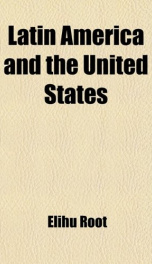root

In vascular plants, the root is the organ of a plant that typically lies below the surface of the soil. This is not always the case, however, since a root can also be aerial (growing above the ground) or aerating (growing up above the ground or especially above water). Furthermore, a stem normally occurring below ground is not exceptional either (see rhizome). So, it is better to define root as a part of a plant body that bears no leaves, and therefore also lacks nodes. There are also important internal structural differences between stems and roots. The first root that comes from a plant is called the radicle. The two major functions of roots are 1) absorption of water and inorganic nutrients and 2) anchoring of the plant body to the ground. In response to the concentration of nutrients, roots also synthesise cytokinin, which acts as a signal as to how fast the shoots can grow. Roots often function in storage of food and nutrients. The roots of most vascular plant species enter into symbiosis with certain fungi to form mycorrhizas, and a large range of other organisms including bacteria also closely associate with roots. The parts of a root are the xylem, the epidermis, the cortex, the root cap, the root hair, the phloem, and the cambium Early root growth is one of the functions of the apical meristem located near the tip of the root. The meristem cells more or less continuously divide, producing more meristem, root cap cells (these are sacrificed to protect the meristem), and undifferentiated root cells. The latter become the primary tissues of the root, first undergoing elongation, a process that pushes the root tip forward in the growing medium. Gradually these cells differentiate and mature into specialized cells of the root tissues. Roots will generally grow in any direction where the correct environment of air, mineral nutrients and water exists to meet the plant's needs. Roots will not grow in dry soil. Over time, given the right conditions, roots can crack foundations, snap water lines, and lift sidewalks. At germination, roots grow downward due to gravitropism, the growth mechanism of plants that also causes the shoot to grow upward. In some plants (such as ivy), the "root" actually clings to walls and structures. Growth from apical meristems is known as primary growth, which encompasses all elongation. Secondary growth encompasses all growth in diameter, a major component of woody plant tissues and many nonwoody plants. For example, storage roots of sweet potato have secondary growth but are not woody. Secondary growth occurs at the lateral meristems, namely the vascular cambium and cork cambium. The former forms secondary xylem and secondary phloem, while the latter forms the periderm. In plants with secondary growth, the vascular cambium, originating between the xylem and the phloem, forms a cylinder of tissue along the stem and root. The cambium layer forms new cells on both the inside and outside of the cambium cylinder, with those on the inside forming secondary xylem cells, and those on the outside forming secondary phloem cells. As secondary xylem accumulates, the "girth" (lateral dimensions) of the stem and root increases. As a result, tissues beyond the secondary phloem (including the epidermis and cortex, in many cases) tend to be pushed outward and are eventually "sloughed off" (shed). At this point, the cork cambium begins to form the periderm, consisting of protective cork cells containing suberin. In roots, the cork cambium originates in the pericycle, a component of the vascular cylinder. The vascular cambium produces new layers of secondary xylem annually. The xylem vessels are dead at maturity but are responsible for most water transport through the vascular tissue in stems and roots. A true root system consists of a primary root and secondary roots (or lateral roots). The roots, or parts of roots, of many plant species have become specialized to serve adaptive purposes besides the two primary functions described in the introduction. The distribution of vascular plant roots within soil depends on plant form, the spatial and temporal availability of water and nutrients, and the physical properties of the soil. The deepest roots are generally found in deserts and temperate coniferous forests; the shallowest in tundra, boreal forest and temperate grasslands. The deepest observed living root, at least 60 m below the ground surface, was observed during the excavation of an open-pit mine in Arizona, USA. Some roots can grow as deep as the tree is high. The majority of roots on most plants are however found relatively close to the surface where nutrient availability and aeration are more favourable for growth. Rooting depth may be physically restricted by rock or compacted soil close below the surface, or by anaerobic soil conditions. The pattern of development of a root system is termed 'root architecture', and is important in providing a plant with a secure supply of nutrients and water as well as anchorage and support. The architecture of a root system can be considered in a similar way to above-ground architecture of a plant - i.e. in terms of the size, branching and distribution of the component parts. In roots, the architecture of fine roots and coarse roots can both be described by variation in topology and distribution of biomass within and between roots. Having a balanced architecture allows fine roots to exploit soil efficiently around a plant, but the 'plastic' nature of root growth allows the plant to then concentrate its resources where nutrients and water are more easily available. A balanced coarse root architecture, with roots distributed relatively evenly around the stem base, is necessary to provide support to larger plants and trees. The fossil record of roots - or rather, infilled voids where roots rotted after death - spans back to the late Silurian,[2] but their identification is difficult, because casts and molds of roots are so similar in appearance to animal burrows - although they can be discriminated on the basis of a range of features.[3] The term root crops refers to any edible underground plant structure, but many root crops are actually stems, such as potato tubers. Edible roots include cassava, sweet potato, beet, carrot, rutabaga, turnip, parsnip, radish, yam and horseradish. Spices obtained from roots include sassafras, angelica, sarsaparilla and licorice. Sugar beet is an important source of sugar. Yam roots are a source of estrogen compounds used in birth control pills. The fish poison and insecticide rotenone is obtained from roots of Lonchocarpus spp. Important medicines from roots are ginseng, aconite, ipecac, gentian and reserpine. Several legumes that have nitrogen-fixing root nodules are used as green manure crops, which provide nitrogen fertilizer for other crops when plowed under. Specialized bald cypress roots, termed knees, are sold as souvenirs, lamp bases and carved into folk art. Native Americans used the flexible roots of white spruce for basketry. Tree roots can heave and destroy concrete sidewalks and crush or clog buried pipes. The aerial roots of strangler fig have damaged ancient Mayan temples in Central America and the temple of Angkor Wat in Cambodia. Vegetative propagation of plants via cuttings depends on adventitious root formation. Hundreds of millions of plants are propagated via cuttings annually including chrysanthemum, poinsettia, carnation, ornamental shrubs and many houseplants. Roots can also protect the environment by holding the soil to prevent soil erosion.
do you like this author?
What readers are saying
What do you think? Write your own comment on this book!
write a commentWhat readers are saying
What do you think? Write your own comment on this author!
write a commentBook list

speech of elihu root at durlands riding academy new york october 31 1908 vo
Series:
Unknown
Year:
Unknown
Raiting:
4/5
Show more
add to favoritesadd In favorites

speech by elihu root as chairman of republican state convention at saratoga ne
Series:
Unknown
Year:
Unknown
Raiting:
3/5
Show more
add to favoritesadd In favorites

some remarks in reference to recent proceedings of the legislature of barbados
Series:
Unknown
Year:
Unknown
Raiting:
4/5
Show more
add to favoritesadd In favorites
Book list

speech of elihu root at durlands riding academy new york october 31 1908 vo
Series:
Unknown
Year:
Unknown
Raiting:
4/5
Show more
add to favoritesadd In favorites

speech by elihu root as chairman of republican state convention at saratoga ne
Series:
Unknown
Year:
Unknown
Raiting:
3/5
Show more
add to favoritesadd In favorites

some remarks in reference to recent proceedings of the legislature of barbados
Series:
Unknown
Year:
Unknown
Raiting:
4/5
Show more
add to favoritesadd In favorites

remarks of elihu root on unveiling a memorial window to the honorable john hay a
Series:
Unknown
Year:
Unknown
Raiting:
4/5
Show more
add to favoritesadd In favorites

panama canal tolls the obligations of the united states
Series:
Unknown
Year:
Unknown
Raiting:
2.5/5
Show more
add to favoritesadd In favorites

miscellaneous addresses
Series:
Unknown
Year:
Unknown
Raiting:
4/5
Originally published in 1917. This volume from the Cornell University Library's print collections was scanned on an APT BookScan and converted to JPG 2000 format by Kirtas Technologies. All titles scanned cover to cover and pages may include marks notations and other marginalia present in the original volume. --This text refers to an alternate Paperback edition.
Show more
add to favoritesadd In favorites

latin america and the united states
Series:
Unknown
Year:
Unknown
Raiting:
5/5
Purchase of this book includes free trial access to www.million-books.com where you can read more than a million books for free. This is an OCR edition with typos. Excerpt from book: today's date to give to this edifice in which the International Pan American Conference is now in session the name of Palacio Monroe. [The Conference then adjourned.] BANQUET OF THE MINISTER FOR FOREIGN AFFAIRS Speech Of His Excellency Baron Do Rio Branco Minister For Foreign Affairs Rio de Janeiro, July 28, 1906 The enthusiastic and cordial welcome you have received in Brazil must certainly have convinced you that this country is a true friend of yours. This friendship is of long standing. It dates from the first days of our independence, which the Government of the United States was the first to recognize, as the Government of Brazil was the first to applaud the terms and spirit of the declarations contained in the famous message of President Monroe. Time has but increased, in the minds and hearts of successive generations of Brazilians, the sympathy and admiration which the founders of our nationality felt for the United States of America. The manifestations of friendship for the United States which you have witnessed come from all the Brazilian people, and not from the official world alone, and it is our earnest desire that this friendship, which has never been disturbed in the past, may continue forever and grow constantly closer and stronger. Gentlemen, I drink to the health of the distinguished Secretary of State of the United States of America, Mr. Elihu Root, who has so brilliantly and effectively aided President Roosevelt in the great work of the political rapprockfmeni of the American nations. Reply Of Mr. Root I Thank you again and still again for the generous hospitality which is making my reception in Brazil so charming. Coming here as head of the department of foreign affairs of my country and seated at the table of the minister of ...
Show more
add to favoritesadd In favorites

experiments in government and the essentials of the constitution
Series:
Unknown
Year:
Unknown
Raiting:
4.5/5
This volume is produced from digital images created through the University of Michigan University Library's preservation reformatting program. The Library seeks to preserve the intellectual content of items in a manner that facilitates and promotes a variety of uses. The digital reformatting process results in an electronic version of the text that can both be accessed online and used to create new print copies. This book and thousands of others can be found in the digital collections of the University of Michigan Library. The University Library also understands and values the utility of print, and makes reprints available through its Scholarly Publishing Office.
Show more
add to favoritesadd In favorites

charges against lebbeus r wilfley judge of the united states court for china
Series:
Unknown
Year:
Unknown
Raiting:
4/5
Show more
add to favoritesadd In favorites

addresses on international subjects
Series:
Unknown
Year:
Unknown
Raiting:
2/5
Elihu Root was a statesman with an amazing intellect, and the addresses and speeches contained in this book are full of elegant language and remarkable insights. They are written in a manner that is accessible to readers of high school age or older. The arguments and observations Mr. Root makes are clear-eyed and conciliatory, and they are as applicable in today's geopolitical environment as they were 100 years ago. His arguments differ from those presented by most contemporary pundits and politicians insofar as Mr. Root is willing to consider both sides and seek middle ground.
Show more
add to favoritesadd In favorites
Show more

address by mr elihu root upon the unveiling of a statue of president arthur in
Series:
Unknown
Year:
Unknown
Raiting:
3.5/5
Show more
add to favoritesadd In favorites

address by elihu rootdedication of the hay library
Series:
Unknown
Year:
Unknown
Raiting:
4.5/5
Show more
add to favoritesadd In favorites

address by elihu root before the union league club of chicago february 22 1904
Series:
Unknown
Year:
Unknown
Raiting:
3.5/5
Show more
add to favoritesadd In favorites
What readers are saying
What do you think? Write your own comment on this author!
write a commentif you like root try:
readers also enjoyed
What readers are saying
What do you think? Write your own comment on this author!
write a commentGenre
if you like root try:
readers also enjoyed
Do you want to read a book that interests you? It’s EASY!
Create an account and send a request for reading to other users on the Webpage of the book!


